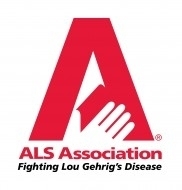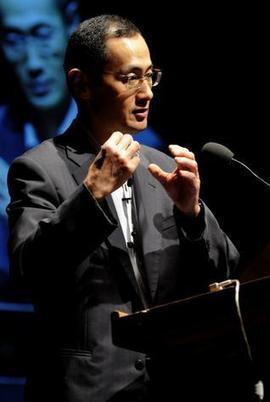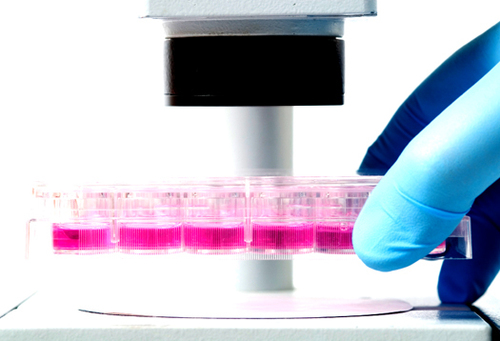Via Scoop.it – ALS Lou Gehrig’s Disease

Posts Tagged ‘Stem Cells’
28 Mar
Neuralstem ALS Stem Cell Trial Interim Results Reported in the Journal, STEM CELLS
28 Mar
Stem Cell Study Aids Quest for ALS Therapies
Via Scoop.it – ALS Lou Gehrig’s Disease

20 Mar
New hope for our toughest diseases – By Richard Garr, president and CEO Neuralstem
Via Scoop.it – ALS Lou Gehrig’s Disease
As the saying goes, there is good news and there is bad news. Here is the bad news: Right now, there are an estimated 5.4 million Americans suffering from Alzheimer’s disease, one million suffering from Parkinson’s, over five million who have a disease related to a traumatic brain injury, 265,000 with spinal cord injuries, 30,000 who have ALS (Lou Gehrig’s disease), and 129,000 who have brain cancer. Over 25 million Americans also suffer from diabetes – about 8.3% of the population – and the problem is growing. After that, it’s hard to believe there is good news, but here it is: R & D breakthroughs are happening in science and biotechnology at a remarkable pace to deal with these diseases. Biotech companies are on the front lines to find cures for life-threatening diseases. There are currently 800 new treatments being developed for cancer by biotech companies, 300 for heart disease, 200 for diabetes and 100 for Alzheimer’s, according to the Biotechnology Industry Organization. Some companies, such as the one I represent, Neuralstem, Inc., are using state-of-the-art stem cell research to attack diseases such as ALS, brain and spinal cord injuries, and down the road, Parkinson’s and Alzheimer’s. What we need to do now is accelerate this research and speed up the development of new cures for those in desperate need. America landed a man on the moon in less than a decade and yet it takes 10-15 years to take a new drug from discovery to treating a patient. Given the pace of scientific change, America is held back and patients are suffering because of the long time lags. Investors and private funders are reluctant to invest with the regulatory barriers placed in their way. The FDA simply must keep pace with the safe and effective development of new, innovative, scientific breakthroughs that can literally provide hope for those with life-threatening diseases. The old, bureaucratic ways simply won’t work in the 21st century.
7 Mar
Fourteenth Patient Dosed in Neuralstem ALS Stem Cell Trial
Via Scoop.it – ALS Lou Gehrig’s Disease
Neuralstem, Inc. announced that the second patient to receive stem cells in the cervical (upper back) region of the spine was dosed on February 29th in the ongoing Phase I trial of its spinal cord neural stem cells in amyotrophic lateral sclerosis (ALS or Lou Gehrig’s disease). Patient 14 is also the first woman to be treated in the trial. Stem cell transplantation into the cervical region of the spinal cord could support breathing, a key function that is lost as ALS progresses. The first twelve patients in the trial received stem cell transplants in the lumbar (lower back) region of the spinal cord only. “This cohort of patients represents another first for our trial, as we transplant cells directly into the gray matter of the spinal cord in the cervical region,” said Karl Johe, PhD, Neuralstem’s Chairman and Chief Scientific Officer. “We are delighted that the surgeries are progressing in a region that could have a significant impact on the quality of life for ALS patients. With the safe transplantation of our 14th patient, we are well are on our way to demonstrating the safety of our novel procedure.” The Phase I trial to assess the safety of Neuralstem’s spinal cord neural stem cells and intraspinal transplantation method in ALS patients has been underway since January 2010. The trial is designed to enroll up to 18 patients. The first 12 patients were each transplanted in the lumbar (lower back) region of the spine, beginning with non-ambulatory and advancing to ambulatory cohorts. The trial has now progressed to the final six patients. Each is in the cervical (upper back) region of the spine. The entire 18-patient trial concludes six months after the final surgery.
Via phoenix.corporate-ir.net
22 Feb
Webcast: Neuralstem, Inc. at Biotech Showcase 2012 (includes update on ALS trial)
Via Scoop.it – ALS Lou Gehrig’s Disease
The webcast of President and CEO Richard Garr’s presentation at Biotech Showcase in San Francisco is now available, and has been posted on the company’s Investor Center. The January 10th presentation includes updates on Neuralstem’s ongoing ALS and NSI-189/major depressive disorder trials. Registration required to access the webcast.
Via investor.neuralstem.com
20 Feb
ALS Clinical Research Update – February 2012
Via Scoop.it – ALS Lou Gehrig’s Disease
The pace of (ALS) discovery is increasing. While Riluzole is currently the only approved drug for ALS, many other treatments are being investigated for their potential roles in ALS treatment. Researchers are improving upon clinical trial design and dosage; they are learning from past trials and using this information to design trials that are faster, more precise, and more appealing to participants. What is coming down the ALS research pipeline?
Via campaign.r20.constantcontact.com
10 Feb
Neuralstem President and CEO to Present at BIO CEO & Investor Conference 2012
Via Scoop.it – ALS Lou Gehrig’s Disease
Neuralstem, Inc. announces that President and CEO Richard Garr will present at the 14th Annual BIO CEO & Investor Conference 2012 in New York City on Monday, February 13, at 3:00 p.m. EST. Garr will present a business overview, and an update on the company’s ongoing clinical trials in both its cell therapy. Neuralstem’s patented technology enables the ability to produce neural stem cells of the human brain and spinal cord in commercial quantities, and the ability to control the differentiation of these cells constitutively into mature, physiologically relevant human neurons and glia. Neuralstem is in an FDA-approved Phase I safety clinical trial for amyotrophic lateral sclerosis (ALS), often referred to as Lou Gehrig’s disease, and has been awarded orphan status designation by the FDA. The webcast will be available in real-time at http://www.veracast.com/webcasts/bio/ceoinvestor2012/43114242.cfm , and again beginning one hour after the conclusion of the live event, and archived for 90 days. The webcast link will also be posted on the Investor Center home page on Neuralstem’s website: http://www.neuralstem.com .
Via news.google.com
3 Feb
“Wide-ranging applications for pluripotent stem cells in drug discovery”
Via Scoop.it – ALS Lou Gehrig’s Disease

Via www.thehindu.com
27 Jan
Stem cells deliver therapy for Huntington’s (may also be useful in the fight against ALS)
Via Scoop.it – ALS Lou Gehrig’s Disease
New research that uses stem cells to deliver gene therapy to treat Huntington’s disease may also be useful in the fight against some forms of Lou Gehrig’s disease, Parkinson’s and other similar conditions. “For the first time, we have been able to successfully deliver inhibitory RNA sequences from stem cells directly into neurons, significantly decreasing the synthesis of the abnormal huntingtin protein,” says Jan A. Nolta, principal investigator of the study and director of the stem cell program and the Institute for Regenerative Cures at the University of California, Davis.
Via www.futurity.org
23 Jan
Cell Transplantation Treatments for Amyotrophic Lateral Sclerosis …
Via Scoop.it – ALS Lou Gehrig’s Disease
A developmental biologist muses about stem cells and regenerative medicine, the ethics of it all and the posibilities.
Via beyondthedish.wordpress.com


